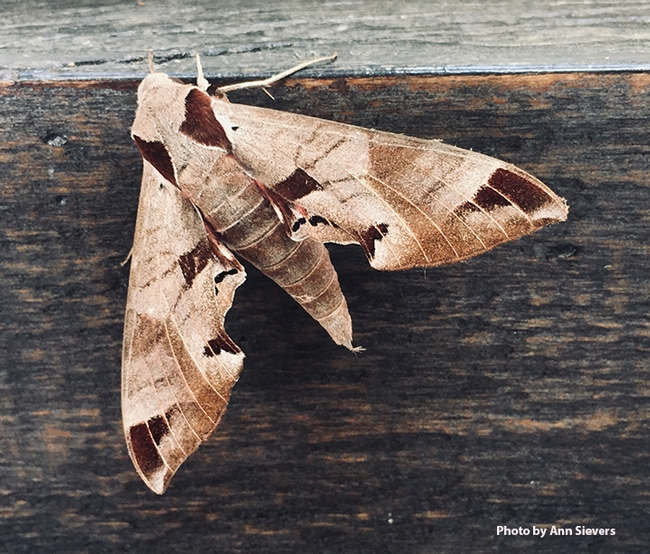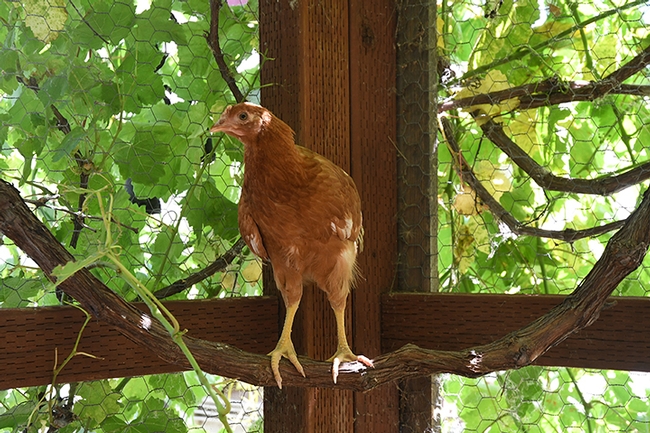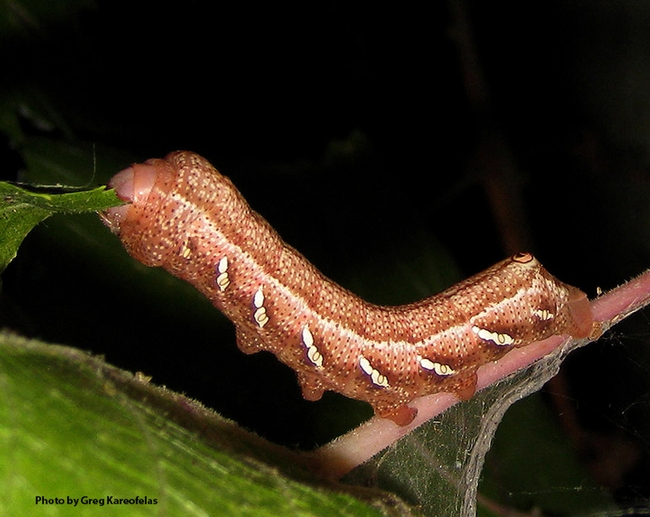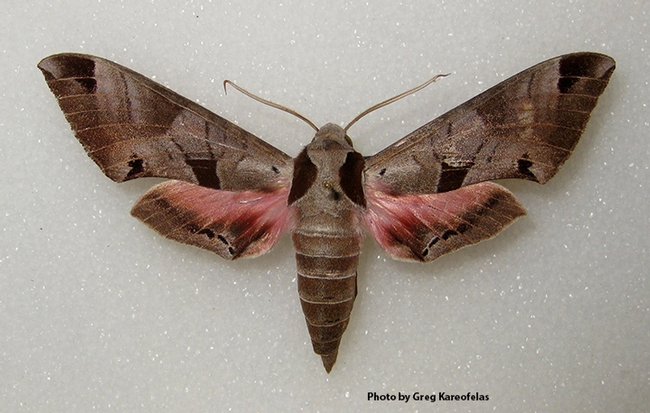
Ann Sievers, owner, grower and miller of Il Fiorello Olive Oil Co., located at 2625 Mankas Corner Road, Fairfield, recently found and photographed this "lovely beast" on an outdoor patio wall.
Incredible photos!
Shapiro identified it as “Eumorpha achemon, the Achemon Sphinx. Fairly uncommon. The very large caterpillar, which has several color phases, eats both wild and cultivated grapes (leaves only) and is never common enough to be considered a pest. Lovely beast!”
Shapiro, known for his expertise on moths and butterflies, has been monitoring butterflies of Northern California since 1972 and maintains a research website on the butterflies that pass through his transects.
The larvae of the Achemon Sphinx moth, are sometimes called the "grape sphinx" for good reason: they feed on grape leaves. The caterpillars are huge (about three-and-a-half-inches long) and vary in color from light green to reddish orange, to brown.
Sievers' chickens that roam the Il Fiorello grounds in the daytime (they're “cooped up” at night to protect them from predators like coyotes) occasionally find and feast on caterpillars and other bugs. And grapevines grow by another pen of chickens. Chow time!
Naturalist and photographer Greg Kareofelas of Davis, an associate of the Bohart Museum of Entomology, says he finds the caterpillars on "the native grape (Vitus californica) growing in my yard."
"Because it did use the native grapes as a host, it is a 'resident native,' of the area," he observed.
The Bohart Museum, located in Room 1124 of the Academic Surge Building UC Davis campus, annuals hosts a Moth Night (see preview story from 2019) but the coronavirus pandemic precautions may turn this year's Moth Night into a virtual one.
Entomologist Jeff Smith, who curates the Bohart Museum's Lepidoptera section, says "we probably have 2.5 drawers of the Grapevine Sphinx. It's found all across the U.S. but never particularly common in our region. Hindwings are a really attractive pink. This is one of 11 species in the genus Eumorpha, but the only species in California."
Attached Images:

Eumorpha achemon, the Achemon Sphinx, is a "lovely beast," says UC Davis distinguished professor Art Shapiro. Ann Sievers, owner, grower and miller Il Fiorello Olive Oil Co., recently found this one the wall of her patio. (Photo by Ann Sievers)

What's for lunch? A chicken in one of Ann Sievers' flocks at Il Fiorello Olive Oil Co., eyes the photographer. Chickens eagerly eat lots of bugs--if they're available. The larvae of the Achemon Sphinx moth feed on grape leaves. (Photo by Kathy Keatley Garvey)

Naturalist-photographer Greg Kareofelas took this image of an Eumorpha achemon larva in his yard in Davis several years ago. It was feeding on native grape, Vitus californica. (Photo by Greg Kareofelas)

An adult Eumorpha achemon, photographed by naturalist-photographer Greg Kareofelas in his yard in Davis several years ago. It was feeding on native grape, Vitus californica. (Photo by Greg Kareofelas)